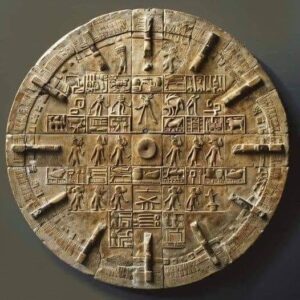Approximately 5,000 years ago in ancient Mesopotamia, where present-day Iraq 🇮🇶 is located, the Sumerians revolutionized our understanding and measurement of time. They developed a complex numerical system based on the number 60, known as the sexagesimal system. This base-60 system laid the foundation for dividing an hour into 60 minutes and a minute into 60 seconds—concepts that remain integral to our timekeeping today.
Why Did the Sumerians Need Precise Time Measurement?
The Sumerians were an agrarian society whose livelihood depended on nature and seasonal changes. For them, having an accurate calendar was essential not only for managing agricultural activities efficiently but also to ensure the success of planting and harvesting cycles, which directly impacted the community’s food supply.
Additionally, Sumerian society included complex religious ceremonies and administrative activities that needed to be conducted at specific times. This created a need for a detailed and precise system of time measurement. From this essential requirement, the Sumerians invented the timekeeping system that we continue to use to this day.

The Number 60 System: A Remarkable Achievement
The Sumerians’ development of a base-60 system was not a random choice. In fact, 60 is a highly divisible number, allowing it to be easily broken into smaller parts without producing complex fractions. This made dividing time convenient and manageable, especially for daily activities and for scheduling agricultural and religious events.
The number 60 can be divided by numbers such as 2, 3, 4, 5, 6, and 10, providing flexibility and practicality for calculations. This indicates that the Sumerians were not only farmers but also skilled mathematicians with a deep understanding of numbers and their applications.
Contributions of Astronomy to Time Measurement
The Sumerians also observed celestial bodies, including the Moon, to develop a 12-month calendar based on lunar cycles. This calendar was designed to align with agricultural seasons, helping the Sumerians better prepare for planting and harvesting.
Their astronomical observations helped them understand and measure the cycle of day and night, leading to the division of the day into 24 hours. This segmentation of time was not only a technical achievement but also a way for the Sumerians to harmonize with nature and the universe, reflecting their cultural and scientific development.

Long-Lasting Influence on Other Civilizations
The Sumerian time measurement system extended beyond the borders of Mesopotamia. Civilizations like the Babylonians, Greeks, and Romans adopted and expanded upon the foundation set by the Sumerians. Scientists and philosophers from later civilizations continued and refined these time measurement principles, forming the basis of the timekeeping system we use today.
The Sumerian Legacy: Influencing Modern Life
When we look at clocks or calendars, we can clearly see the influence of the Sumerians in modern life. Their base-60 time measurement system established a structure for our daily routines—from work hours and study time to moments of leisure. Their innovations in time measurement are not just a historical milestone but also a testament to human creativity and intellect since ancient times.
Conclusion
The Sumerians were not merely farmers attuned to the seasons; they were also visionary mathematicians and astronomers. Their invention of the time system profoundly impacted subsequent civilizations and laid the groundwork for the modern timekeeping system. Their legacy is a testament to human intelligence and limitless creativity, and it will undoubtedly continue to shape our lives for centuries to come.
